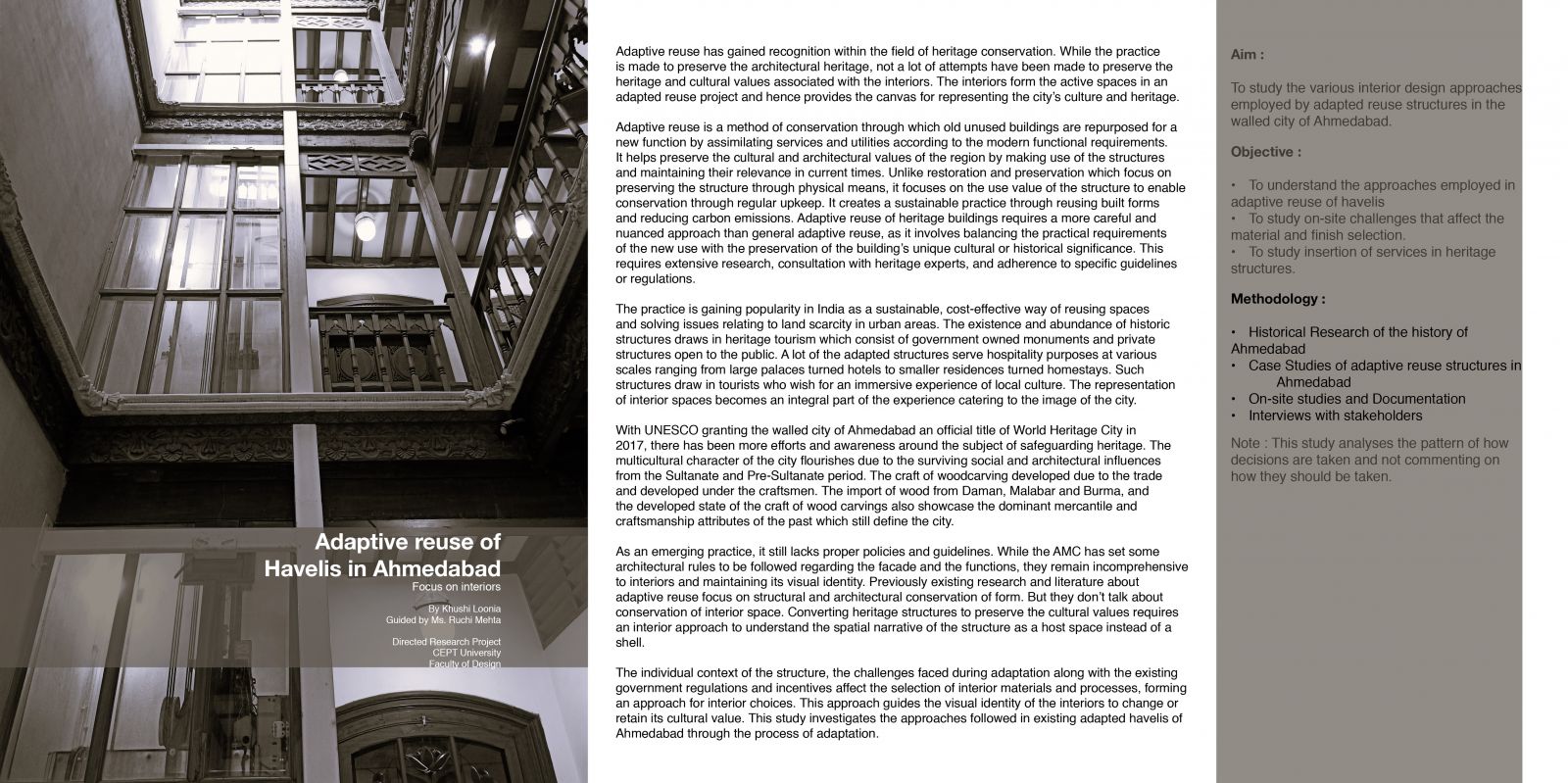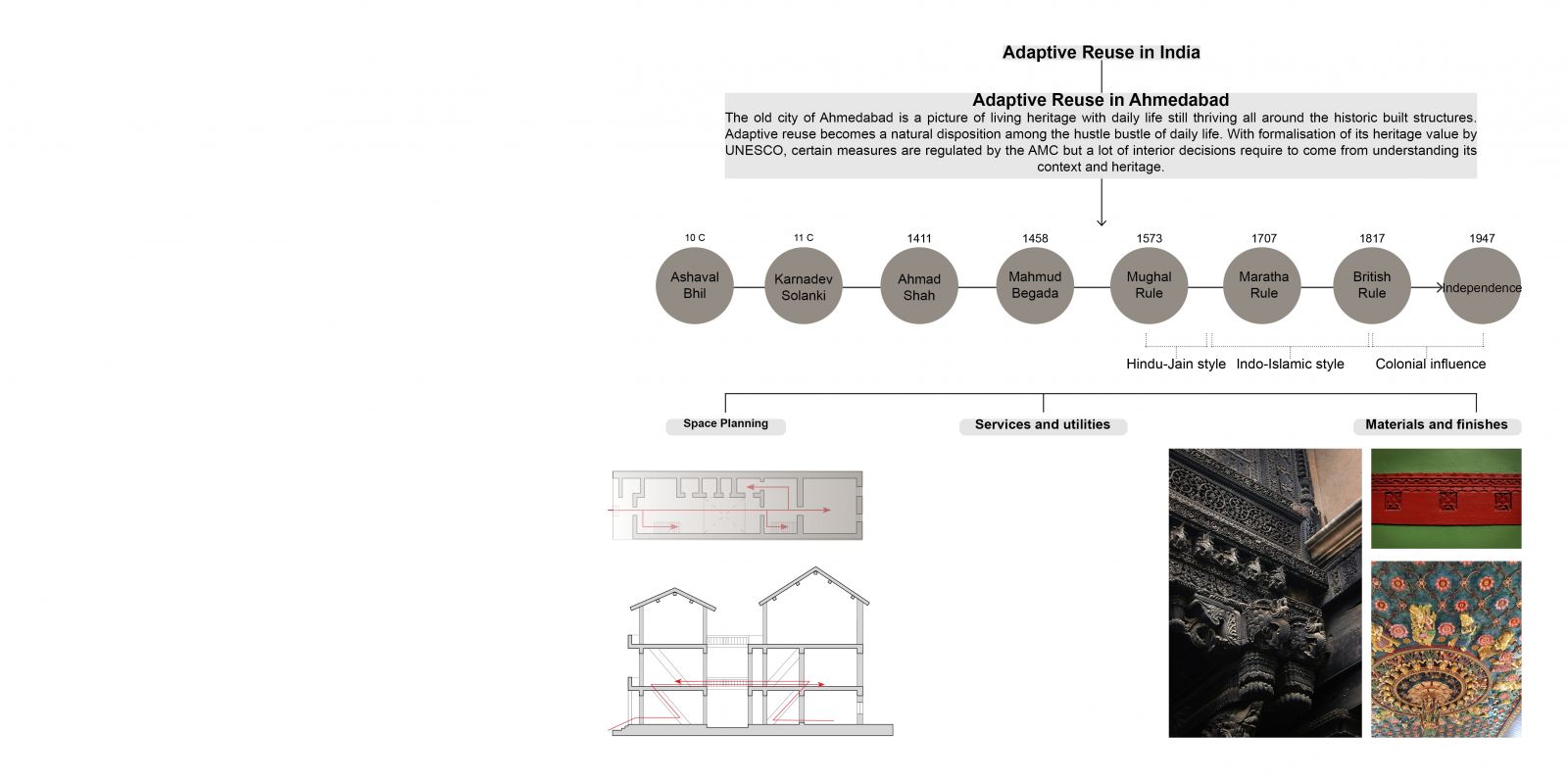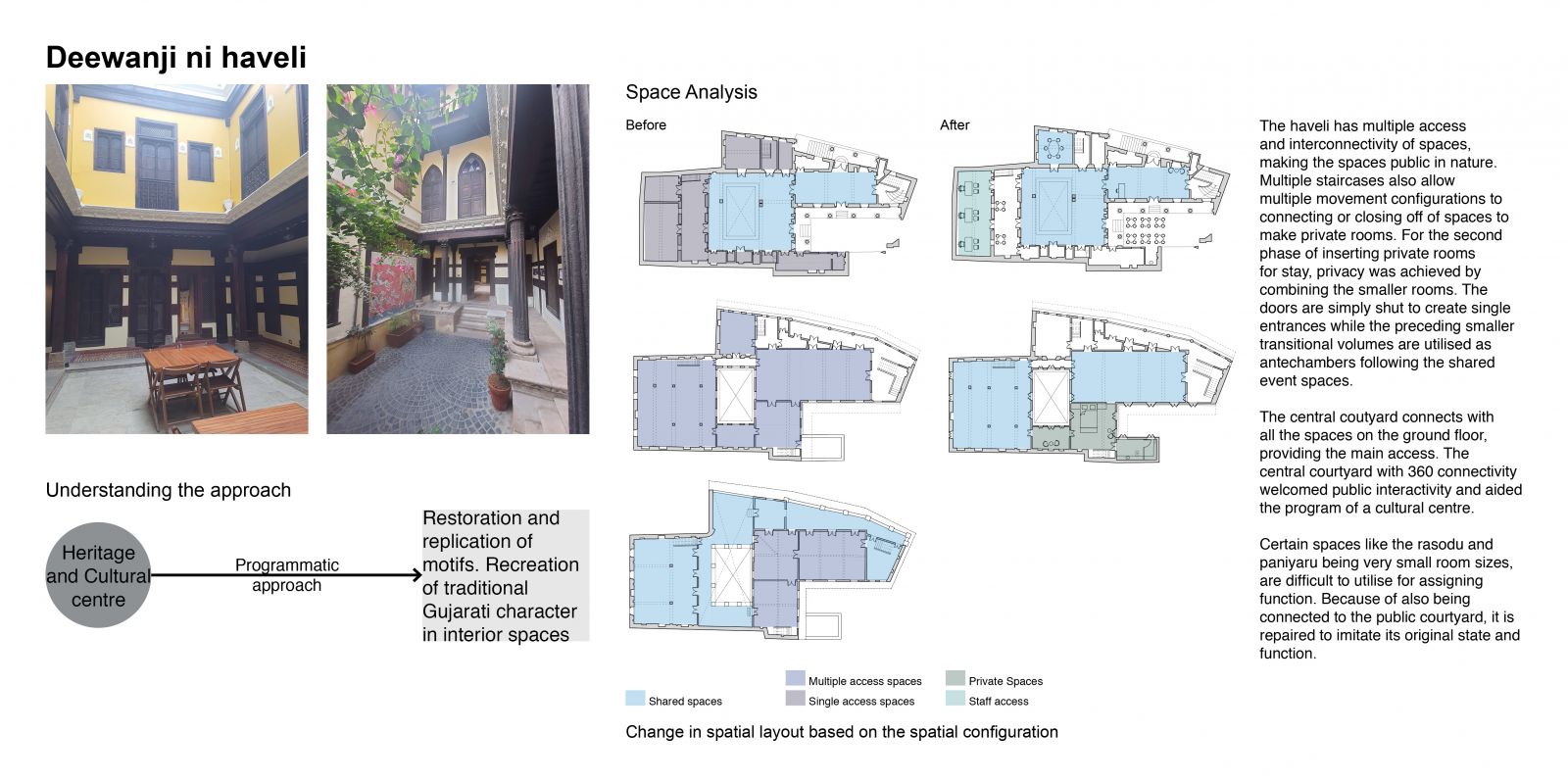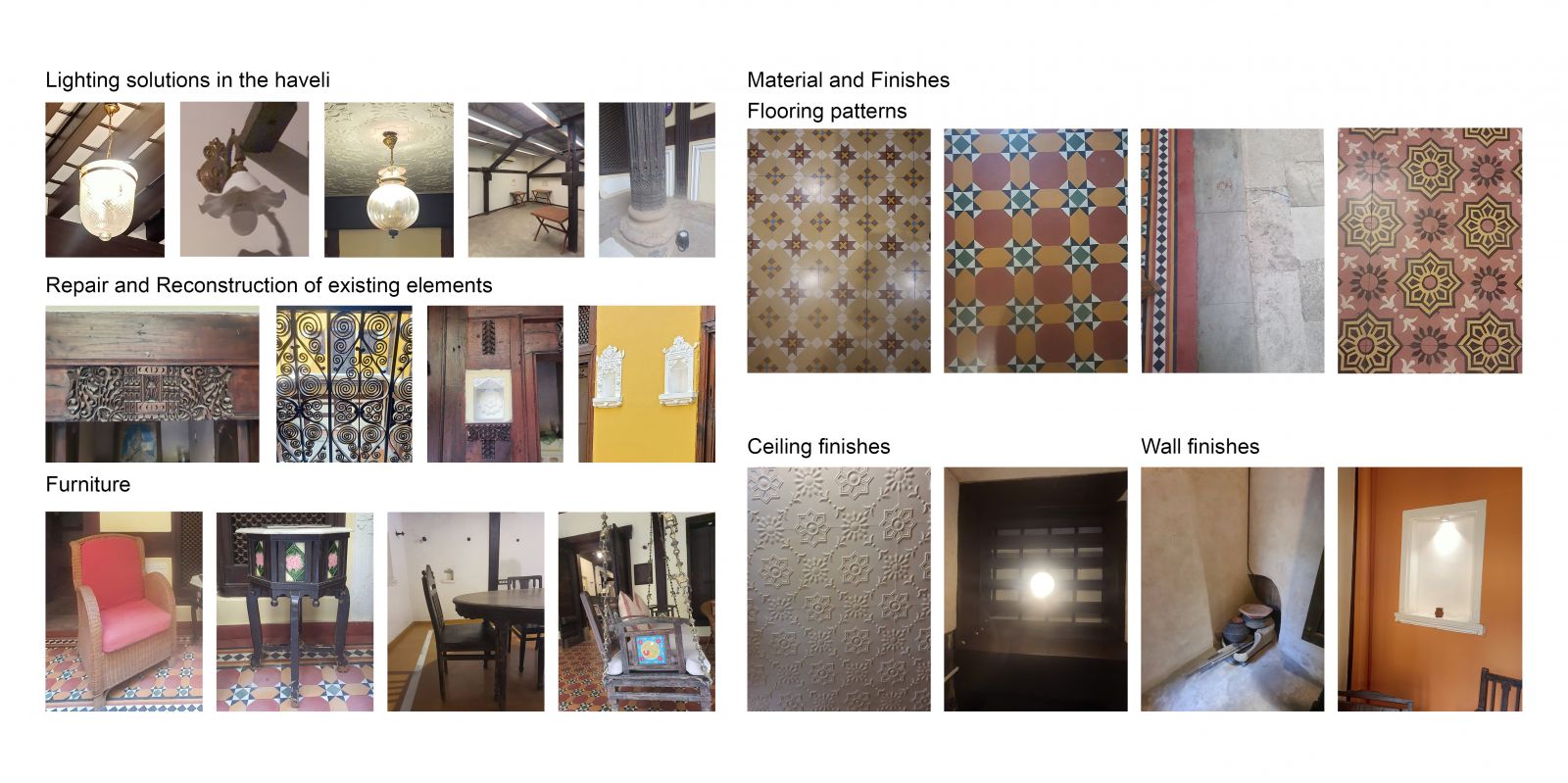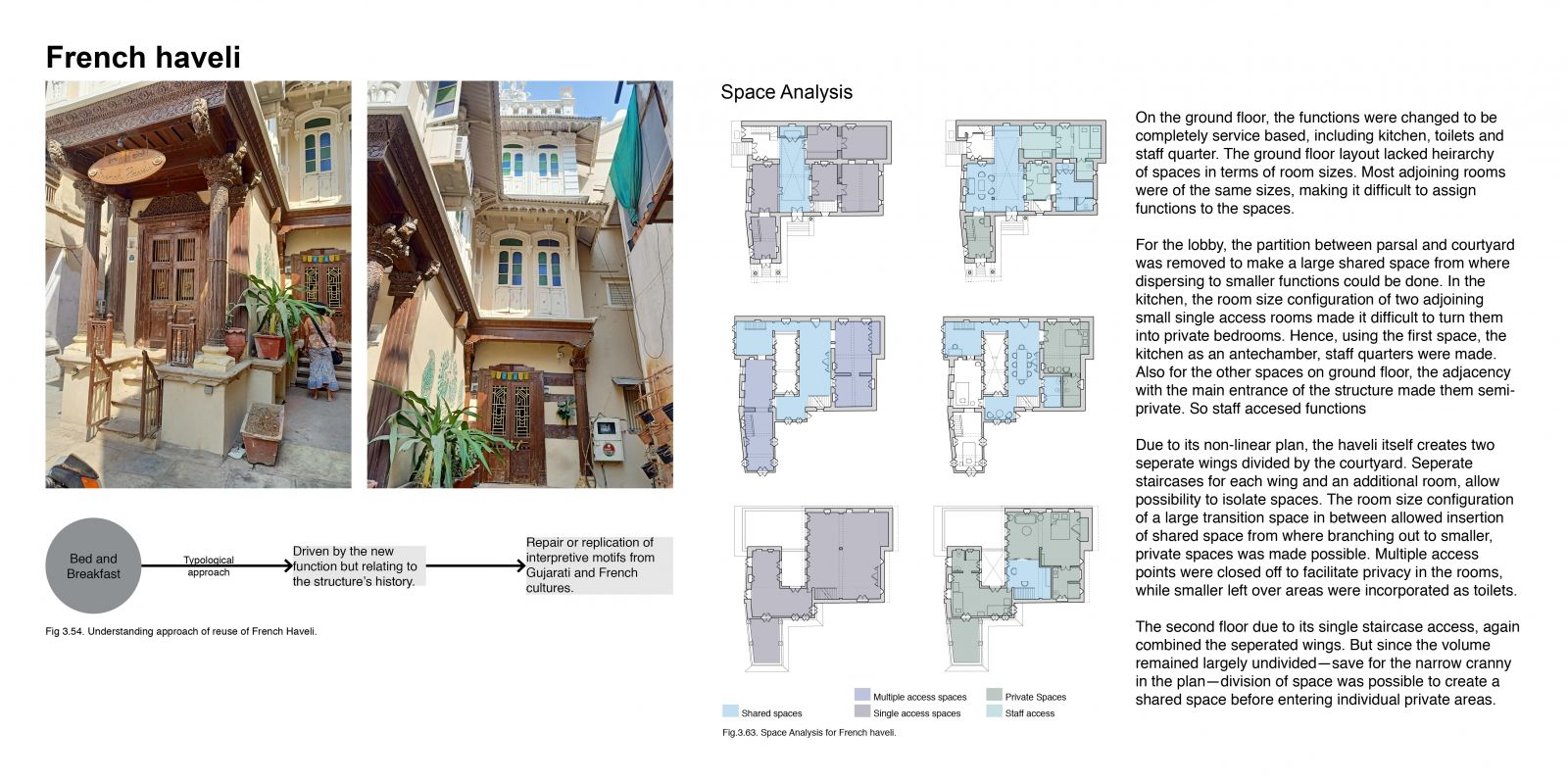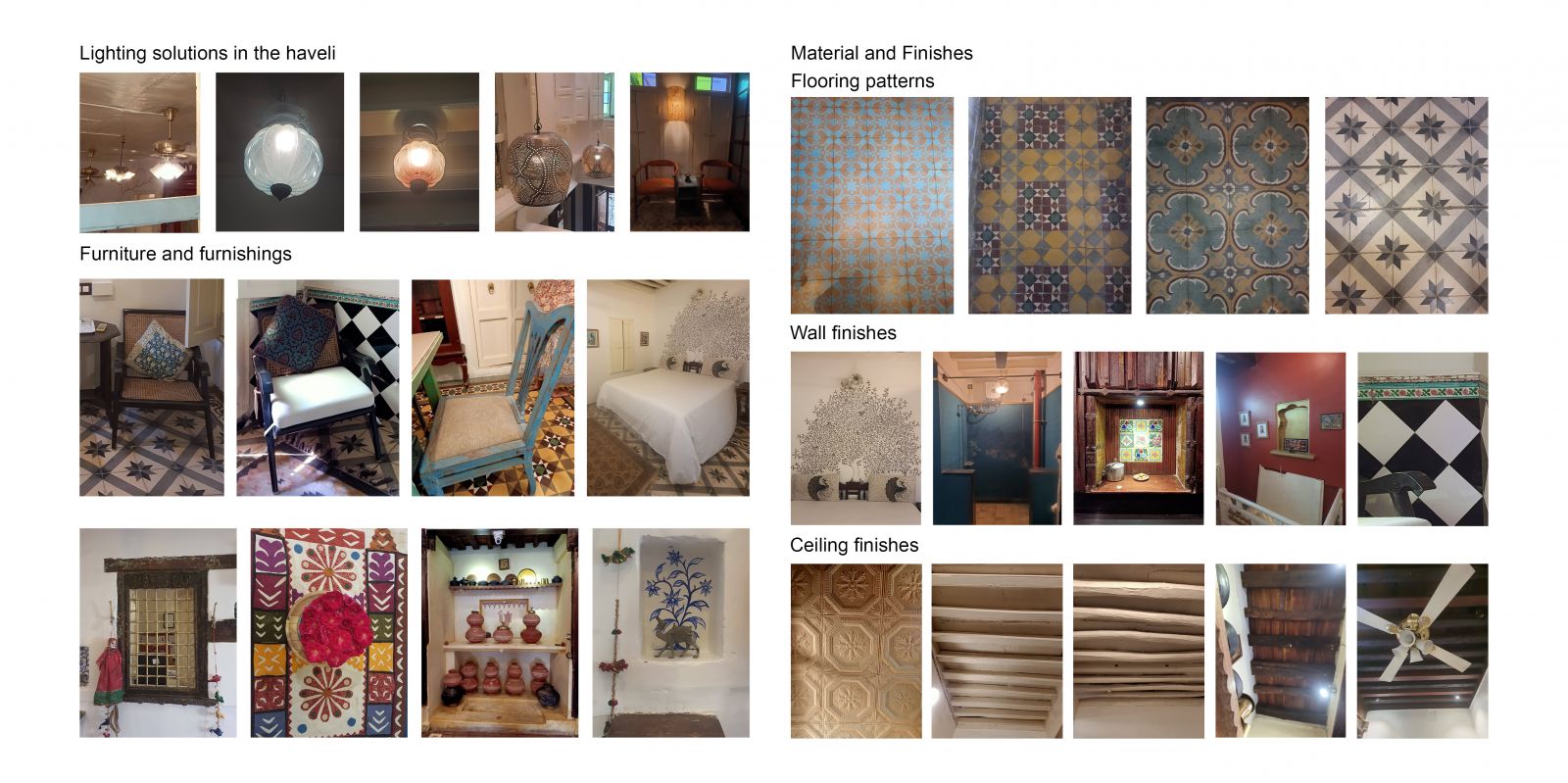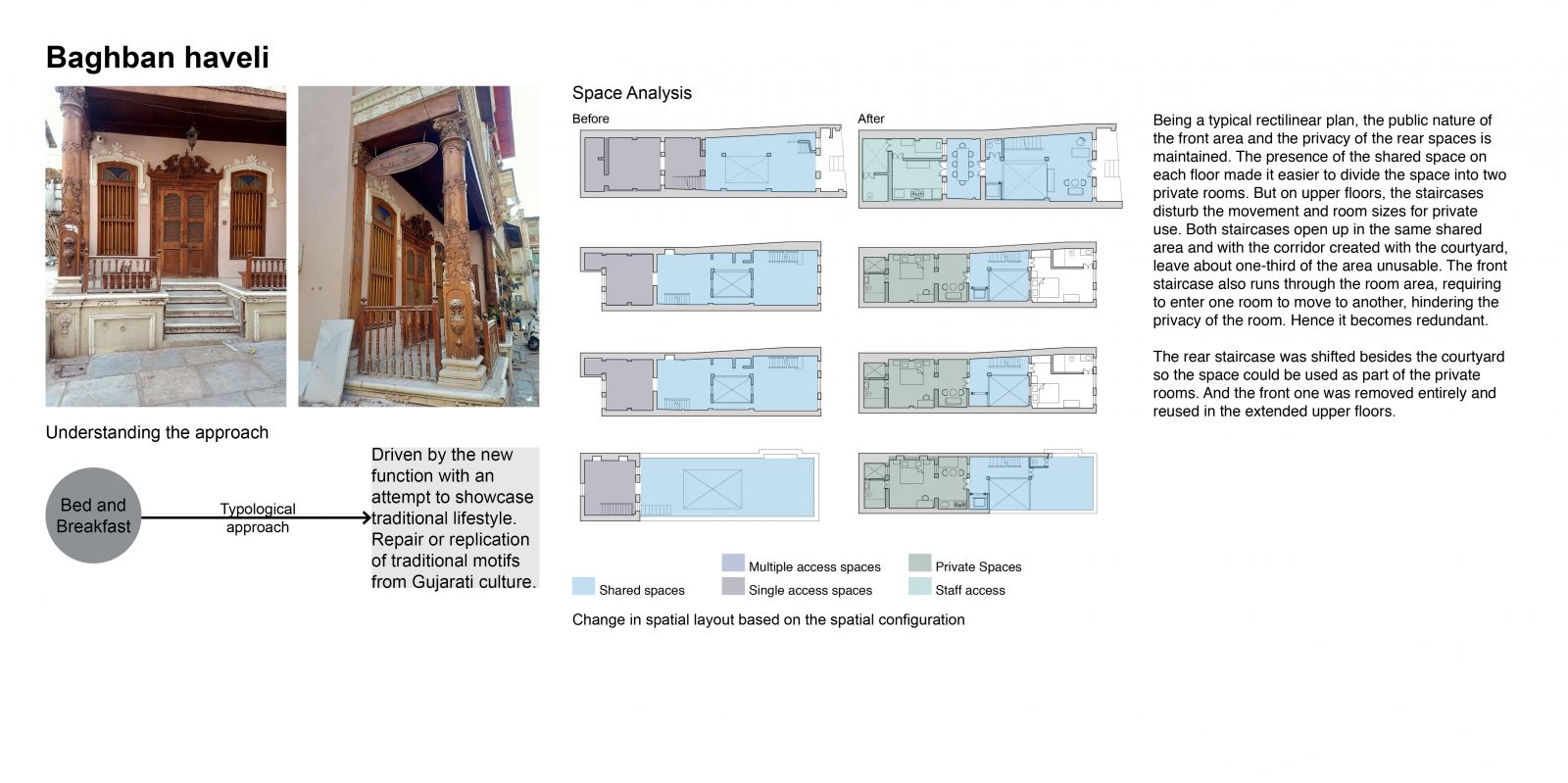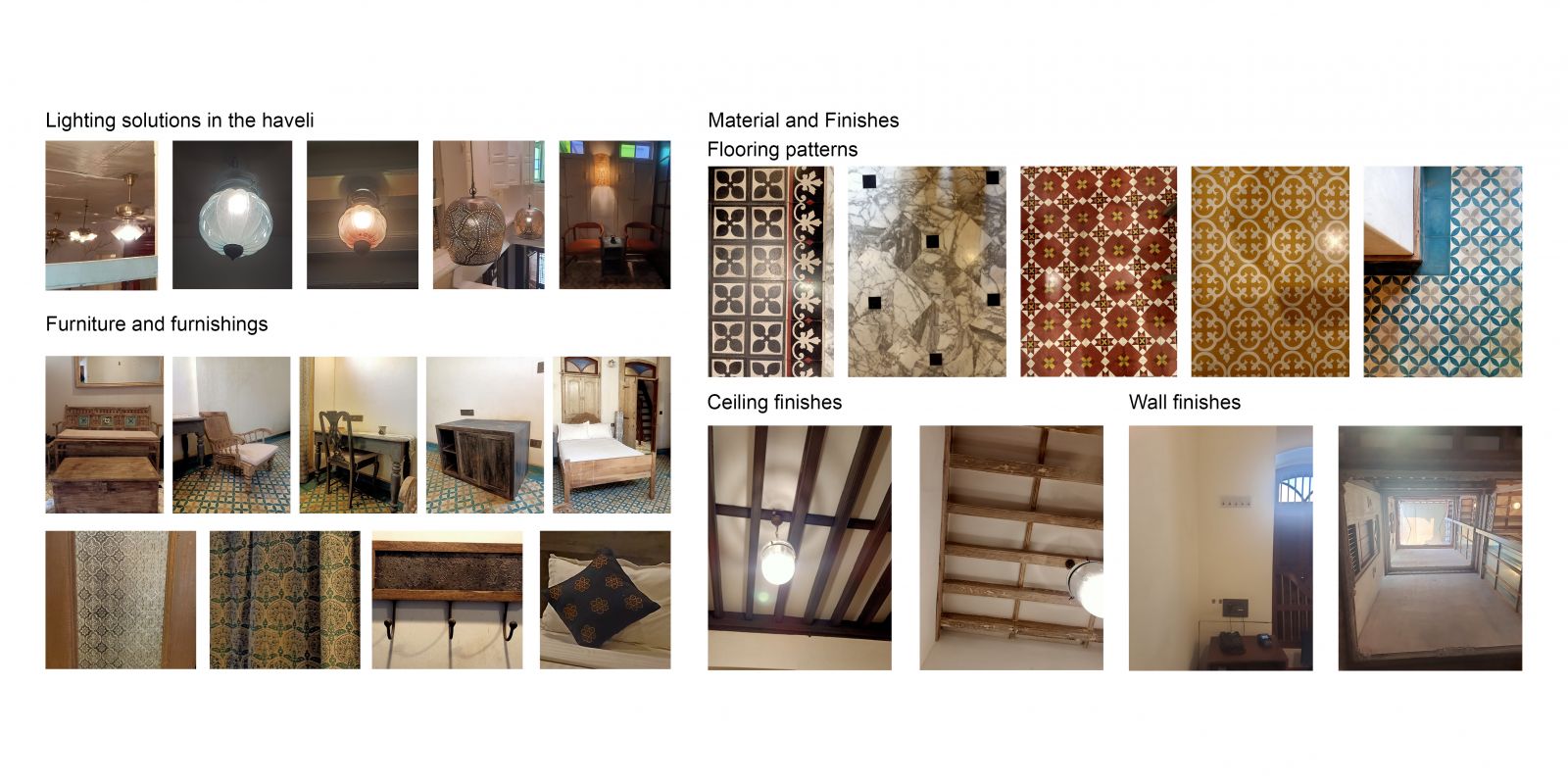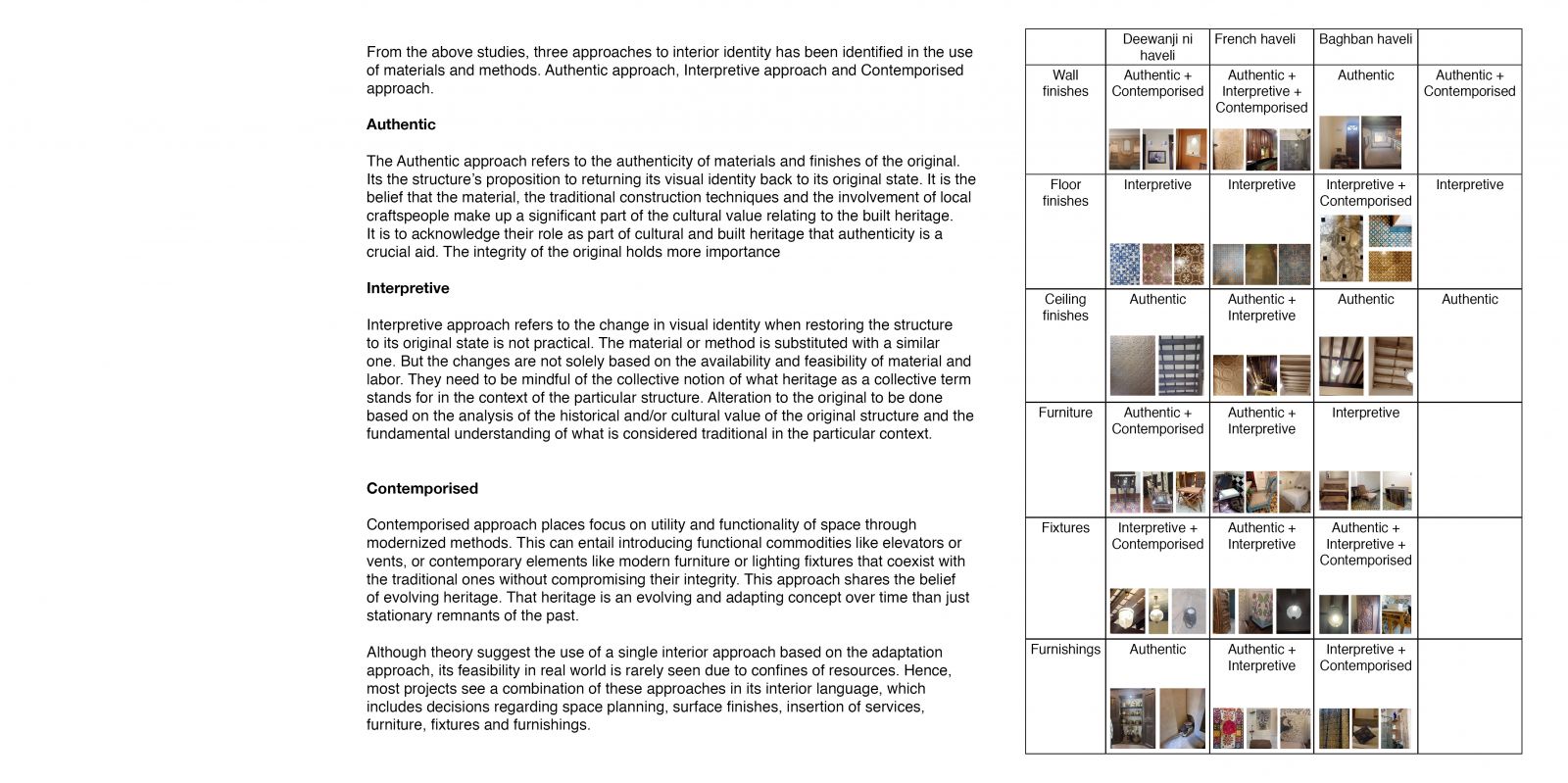Your browser is out-of-date!
For a richer surfing experience on our website, please update your browser. Update my browser now!
For a richer surfing experience on our website, please update your browser. Update my browser now!
With UNESCO granting the walled city of Ahmedabad an official title of World Heritage City in 2017, there has been more efforts and awareness around the subject of safeguarding heritage. The multicultural character of the city flourishes due to the surviving social and architectural influences from the Sultanate and Pre-Sultanate period. The individual context of the structure, the challenges faced during adaptation along with the existing government regulations and incentives affect the selection of interior materials and processes, forming an approach for interior choices. This approach guides the visual identity of the interiors to change or retain its cultural value. This study investigates the approaches followed in existing adapted havelis of Ahmedabad through the process of adaptation.
View Additional Work